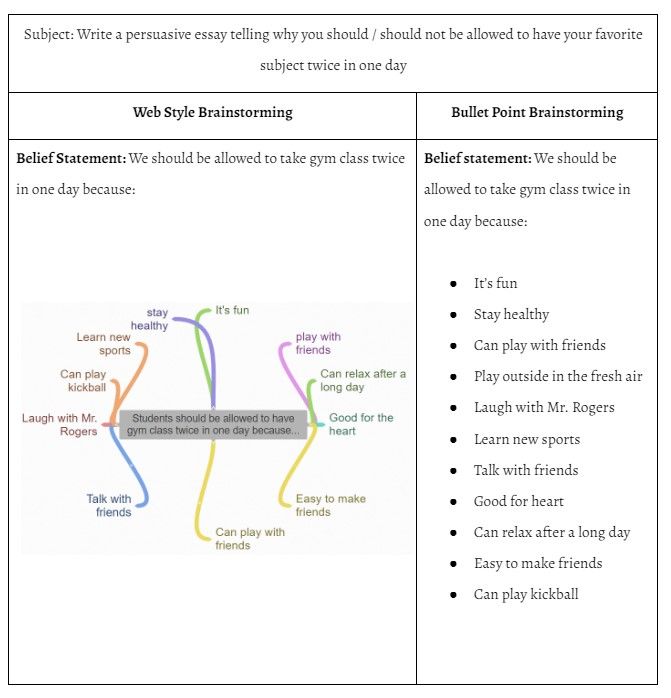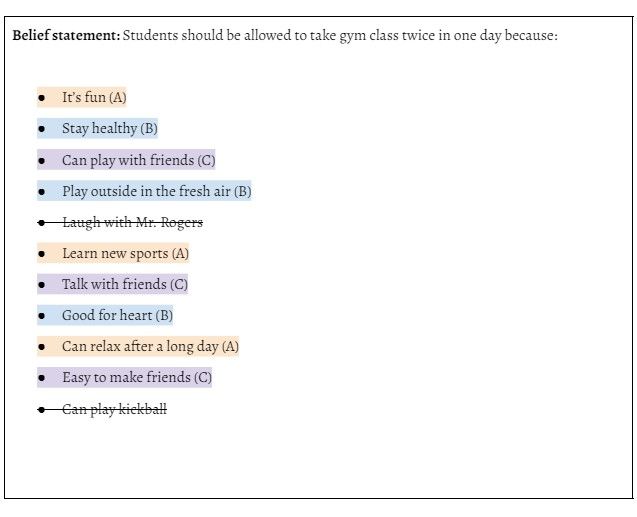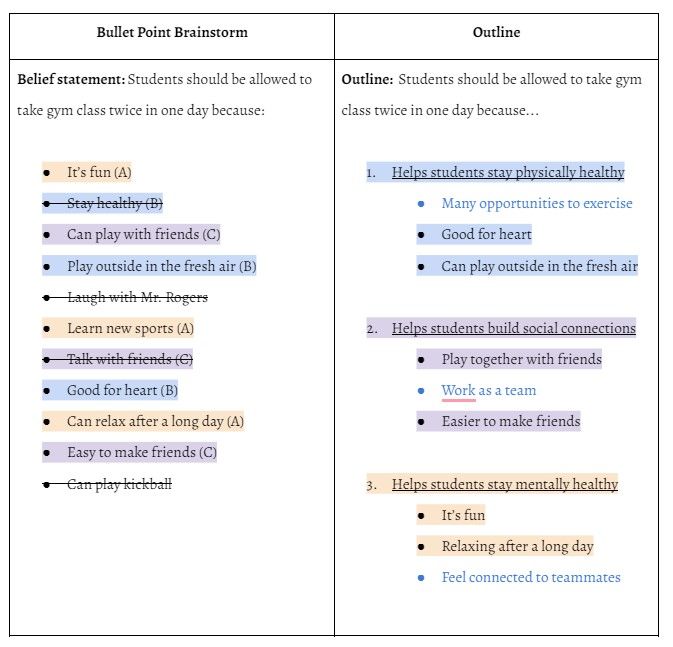When it comes to writing academically whether it's an argumentative essay, a report, or a research paper, most people fall into the same trap of thinking that planning is a superfluous and unnecessary step. In fact, almost any exceptional writer will tell you that the most important skill which sets them apart from their peers is the ability to generate ideas (brainstorming) and arrange them in a logical order that will guide their essay structure (outlining). The following article will explain step by step how to master both of these skills. The Brainstorm Brainstorming is a crucial skill and is in most cases a necessary stepping stone to completing any academic composition. The point of brainstorming is to generate ideas about a topic, with the eventual aim that the best of those ideas be converted into an outline, or the first draft of a composition. The most important aspects of brainstorming are as follows.
There are no bad ideas
The point of brainstorming is to generate ideas, preferably using a method similar to “stream of thought” (where any thought that comes up is written down). This means that during this process, students should forego judgement of their thoughts and simply write down as much as they can. Discerning which points are strongest or most relevant to the topic can come at a later stage.
Staying on Topic (the “Thesis Statement”)
Whilst there are technically “no bad ideas in a brainstorm”, at the beginning of the process, writers need to do their best to ensure that they have articulated the purpose of the brainstorm correctly. This means that ideally the brainstorm should be structured around a “belief”, with the objective of the brainstorm to give reasons for the belief. In the end, the belief plus the reasons will form the essay’s “thesis statement”. For more information on what belief statements are and how to generate them, see the section titled “Thesis Statement”.
Below are some examples of brainstorming done correctly following two styles.
Traditionally, students have been taught to brainstorm using the “web” style, which involves writing the main idea of a composition in the center, with each idea coming from the center to give the final appearance of a web. However, this method is most obviously suited to pen and paper, and also requires a large amount of space, making it impractical at times. Therefore, an alternate “bullet point” method which is suitable for almost any context will also be provided.
Step 1: How to Brainstorm
In this stage the writer will convert the question or subject of the composition into a “belief statement”, and write any ideas that come to their head that could provide reasons for that belief.

Step 2: Grouping
In this stage the writer needs to try and group his ideas logically. They may also like to take this time to cross out any ideas that are weak or unrelated. Doing so will make the “outlining” stage considerably easier. A good aim is to try and arrange points into three groups, since this is the ideal number of supporting sentences in a paragraph, or paragraphs in an essay. But any logical grouping will do since they will likely be further adjusted during the next stage of planning (outlining).

Making an Outline
After brainstorming, students need to create an outline that will help them to plan out their composition. The purpose of the outline is to ensure that the writer stays on topic throughout the entire composition. One of the worst mistakes a writer can make is to go “off topic”, which is when their writing is no longer helping to answer their belief statement, or in other words, they are writing about something different than what they planned. “Off topic” sentences or paragraphs do not contribute to the overall composition, and are therefore wasted, no matter how well they are written. Going off topic is a surprisingly easy thing to do, even for experienced writers, and it is therefore a good writer’s top priority to avoid this. A clear outline will help with this greatly.
If a writer has completed both steps of brainstorming, creating the outline should be easy. It should be noted that a writer may not always have time to brainstorm, but they should always make time to make an outline for the reason stated above. Whilst there is room for personal preference and style, generally speaking an outline should focus on the body of the essay since this is the most important part of any composition. Ideally it will include the controlling idea of the topic sentence for each paragraph, as well as at least 3 supporting details (usually written in dot point form). An example of how one might convert a brainstorm into an outline is below.
Topic Statement
Generally, during the outline stage the writer should also plan their “topic statement” or what they wish to state about the main topic. The topic statements for each paragraph can be found as number 1-3 below.

Teacher Tips
Notice that not all of the points from the brainstorm made it into the outline. Dropping points or adjusting them to fit the topic sentence of each paragraph is a normal feature of the outlining stage and should be encouraged.
Notice that some additional points were added which are written in blue. It is expected that a writer may still need to generate extra ideas during the outlining stage.
In what order you choose to write your paragraphs is not usually very important, the main thing is that a writer should always have their strongest point as their first paragraph. Conclusion Starting any new academic writing project can be daunting, but a thoughtful brainstorm and well structured outline can make it a breeze. If you are struggling with getting your ideas down on paper, or find yourself consistently receiving mediocre grades for your writing projects, then learning to properly plan is one of the fastest way to improve. The above structure is a tried and tested method for planning that can be applied from middle school all the way to college. Why not give it a try and see what a difference it makes to your writing quality.


